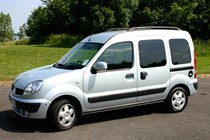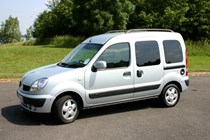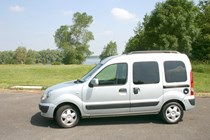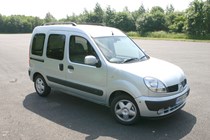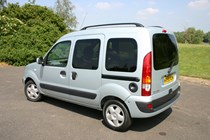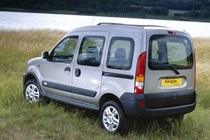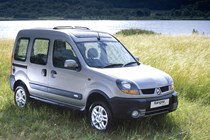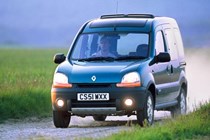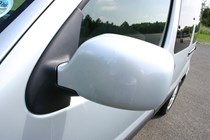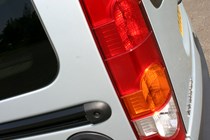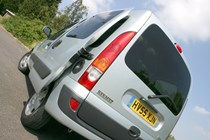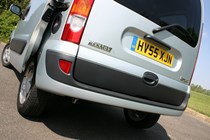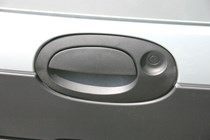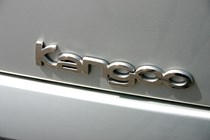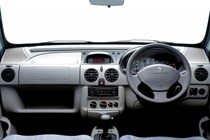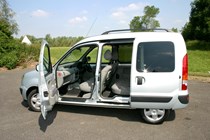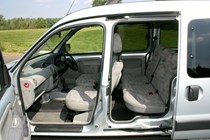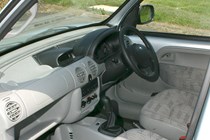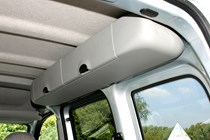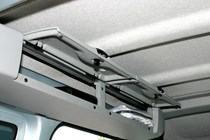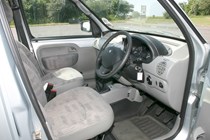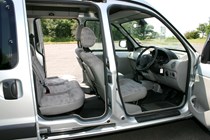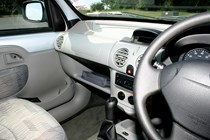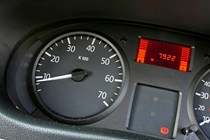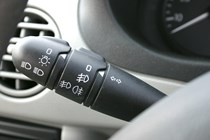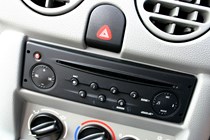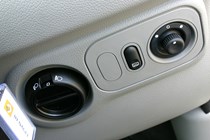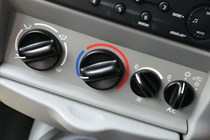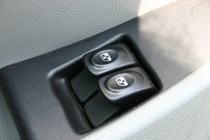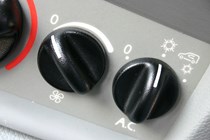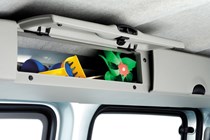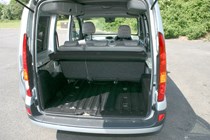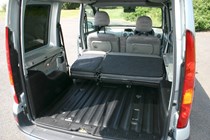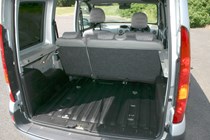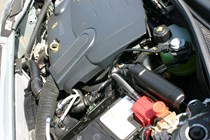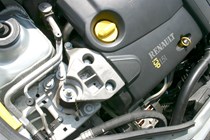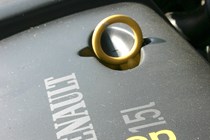
Renault Kangoo Estate (1999-2008) interior, tech and comfort

Visibility is one of Kangoo’s strong points, as the large rear windows and wide-angle door mirrors are great for reversing and overtaking, and there is even an optional additional mirror that is designed to keep an eye on the kids in the back, too. A comfortable driving position is easy to attain and there are no major blindspots due to the thin pillars.
The plastic matt dashboard is durable, but the individual components do not fit together as neatly as they should – leaving gaps between the fascia and workings beneath – which looks untidy. The interior finish throughout the cabin is disappointingly cheap looking, as the fragile ashtray cover wobbles awkwardly upon opening and despite providing extra storage for flatter items, the flimsy door bins in the rear could be easily broken by the heavy-handed.
There are also numerous visible screws – especially in the front doors – adding to the Kangoo’s rather budget interior appearance.
The Kangoo’s air conditioning is efficient but raucous, rapidly cooling the car within minutes but at the price of serenity. This coupled with some coarse engines, a throttle that emits an annoying whistle in high gears and a fair amount of wind noise, results in a drone that spoils the ride. The seats are comfortable for short journeys, but not supportive enough for long trips.
Three children should fit comfortably into the rear seats, but although the driver and front passenger get carpeted footwells, the flooring in the rear is only made of rubber, which looks cheap, but is a blessing on muddy days.


